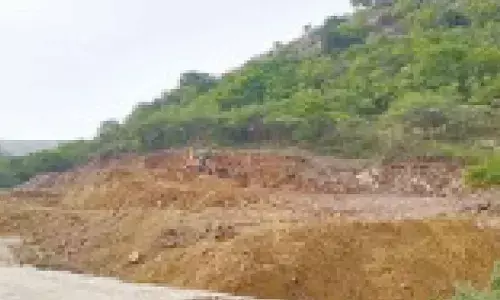Remnants of a Royal Past

Remnants of a Royal Past. Baroda or Vadodara it is not a typical tourist city. It is a city where dabbles of history in every nook and corner comfortably co-exist with modern day malls and residences.
Baroda or Vadodara it is not a typical tourist city. It is a city where dabbles of history in every nook and corner comfortably co-exist with modern day malls and residences.
I stood stunned and pleasantly surprised that a casual walking trip had turned into that of an art discovery. The walls of the huge room in which we stood were covered with miniature paintings and floral murals depicting scenes from Mahabharata and Ramayana, life of Lord Krishna, besides English life scenes. Floral designs of mindboggling variety lined up the paintings, acting as borders.
The spacious, four-storey building christened as Tambekar Wada and constructed in an oblong fashion has a distinct claim to fame. It was once the residence of Bhau Tambekar, the Baroda State Diwan or Minister, who lived in the late 19th century and was responsible for the administration of the state. However, from outside it looked like just another building and furthermore, as it was in the middle of a busy street, I doubt if any passer-by would have even given it a second look. There were two men at the main entrance who looked up at us curiously as we walked up to them. We later learnt that they were caretakers of the mansion and has been posted there by the Archaeological Society of India, which has taken over the place. After confirming the identity of the building, one of them volunteered to show us around the house, pointing out the absence of any admission fee.

The caretaker took us to the first floor of the building accessed by steep and narrow stairs and we soon found ourselves in a long, rectangular room, leading to a long, narrow balcony. The balcony was covered with steel mesh, which let in a lot of light in but didn’t exactly complement its vintage surroundings. The hall itself, though, was an exquisite piece of art, as already described in the beginning. But most of the wall paintings were in a state of decay. The caretaker mentioned that it was only recently that the Wada had been taken up by the Archaeological society of India as a heritage site. Until then, it was being used as a Marathi school, an unfortunate use which had no doubt inflicted a lot of damage on the paintings and accelerated their decay. He then took us to another hall, which was on the floor above. Here the murals thankfully were in a better state of preservation.
People of the locality were clearly ignorant about its rich interiors which became clear after a young boy looked at me curiously and asked “Why are you taking pictures of this house? What is so special about it?” However, a little later he and two of his friends enthusiastically joined me in a tour of the house after which he exclaimed his surprise about the richness of the mansion.

Before we left, we were asked by the caretaker of Tambekar Wada to sign a visitor book. I noticed that we were the only visitors for the entire month (it was already 11th) and a few foreign visitors had been there the month before. I had a faint guess that they all were led here by the LP (Lonely Planet).
The city of Baroda abounds in heritage buildings like that of the Tambekar Wada. The State of Baroda ( often referred to as the City of Princes and Maharajas) was one of the largest and wealthiest princely states existing alongside British India, with wealth coming from lucrative cotton business as well as rice, wheat and sugar. At the time of India’s independence, only five states were entitled to a 21-gun salute – (the highest order) and the Maharaja Gaekwad of Baroda was one of them ( the other four were the Nizam of Hyderabad, the Maharaja of Mysore, the Maharaja of Jammu and Kashmir state, and the Maharaja Scindia of Gwalior)
The affluence of the city is reflected in the rich architecture of its buildings. Laxmi Vilas Palace, the official residence of the Maharaja of Baroda, an awesome piece of architecture, is undoubtedly the icing on the cake. The palace, though open for public, is privately owned and maintained by the royal family. Built in Indo Sarcenic Style, the heritage structure reflects an Indo European amalgamation of architecture. In the Durbar hall of the palace’s the ground floor are two original paintings, of Raja Ravi Verma, goddess Laxmi in her red-saree flanked by elephants, gold coins showering out of her palm and goddess Saraswathi in her white saree and holding the Veena. Getting a glimpse of the original was a real treat for the eyes as both have been copied infinite times and are visible in innumerable calendars.
The palace from the outside reflects cultural amity through a combination of dome, turrets and towers; with respect to the different religious symbols of architecture – Christian, Jain, Muslim and Hindu. As the guide led us from one room to another, I mentally drifted to those days when the Maharajas ruled in all their pomp and splendour- the Maharajas in full Regalia holding court under the crystal chandeliers, the marble and granite statues adorning the pathways leading to lush stretches of green where regularly graced by the royalty.
Baroda or Vadodara it is not a typical touristy city. It is a city where dabbles of history in every nook and corner comfortably co exist with modern day malls and residences. Just walk through the narrow lanes of old city to see old architecture, the Gujarati & Maratha traditional style Havelis with beautiful wood carvings and enjoy experiencing another era.







